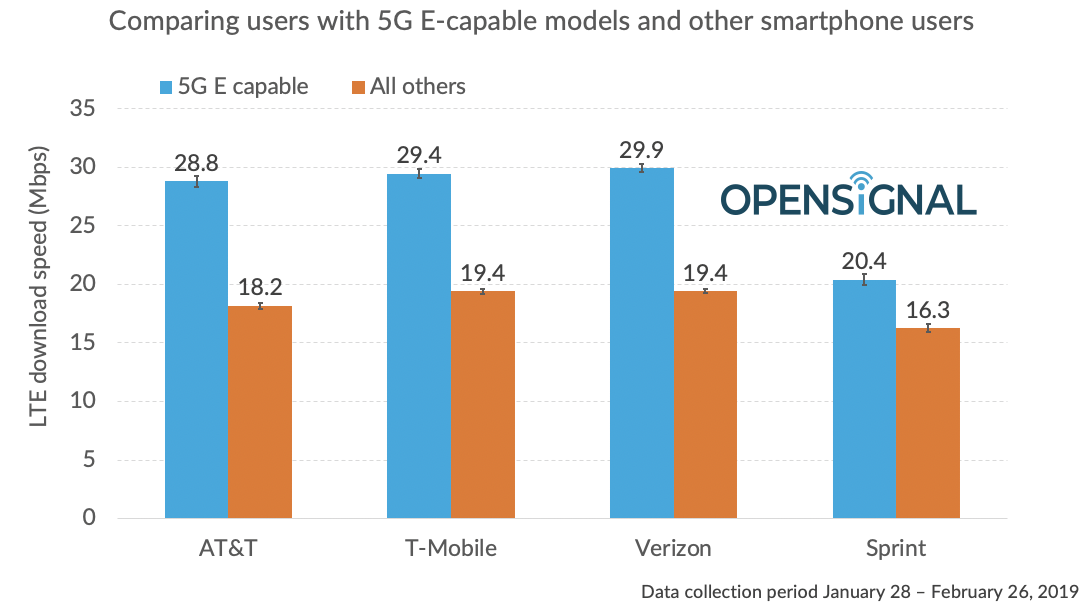Consumers with phones capable of showing AT&T’s 5GE connectivity icon are experiencing faster speeds, but not more so than users on other carriers’ networks that leverage LTE Advanced Pro technologies, according to Opensignal.
This is not a huge surprise, as AT&T’s 5GE branding is for parts of its network using those LTE-A Pro technologies including carrier aggregation, and technical capabilities like 256 QAM and 4×4 MIMO.
“The 5GE speeds which AT&T users experience are very much typical 4G speeds and not the step-change improvement which 5G promises,” wrote Ian Fogg, who leads OpenSignal’s analysis team, in a blog post about the results.
Using crowdsourced data of its more than 1 million installed based, Opensignal found users with 5G E-capable smartphone models experienced download speeds of 28.8 Mbps on AT&T — similar (but actually slightly slower) than users with LTE-A Pro-capable devices on T-Mobile and Verizon, with users experiencing average download speeds of 29.4 Mbps and 29.9 Mbps, respectively. Sprint lagged behind at 20.4 Mbps.
Opensignal explained that its analysis looks at smartphone models that AT&T displays the 5GE icon on when connected to a particular LTE network standard. AT&T lists about 20 of these models on its website.
“Opensignal is choosing not to differentiate between the times when 5GE is shown and when it is not, because we wish to compare the 5G E experience with the users connecting to the other US carriers that do not show 5GE but offer the same 4G technologies. In other words, just as 5GE is only available some of the time, so is the equivalent LTE Advanced Pro technologies on the other three networks.”
OpenSignal’s data shows that the biggest difference in experience depends on whether a user has an LTE-A Pro-capable device, rather than which carrier they use.

Image Source: Opensignal
“AT&T users with 5GE-capable smartphones receive a better experience than AT&T users with less capable smartphone models, for example those with an LTE Category below 16,” Fogg wrote. “But AT&T users with a 5GE-capable smartphone receive similar speeds to users on other carriers with the same smartphone models that AT&T calls 5GE.”
Fogg noted it also shows how much LTE has improved since it originally launched, with LTE-A Pro offering a “much faster experience” than the 4G version from 2009-2011.
“AT&T’s 5GE example highlights the extent to which 4G experiences differ,” Fogg said. “Perhaps carriers should show a different icon for smartphone users when experiencing the latest 4G technologies like LTE Advanced.”




